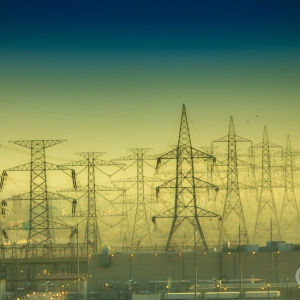The Stream, September 23, 2021: New York City Risks Running Out of Water By 2050
YOUR GLOBAL RUNDOWN
- Water stress in major American counties, including New York City area, will worsen by 2050.
- Arsenic is found in locally grown food items in the Indian state of Bihar for the first time.
- Sewage pollution is making popular swimming spots along the Thames River unsafe.
- Climate change will lead to more extreme weather in Brazil, including droughts and floods.
Some incarcerated people in Louisiana are without running water weeks after Hurricane Ida hit the area.
“When we think about people who are incarcerated, I would argue that they are on the front lines of climate change.” – Andrea Armstrong, a law professor at Loyola University New Orleans. Minutes after Hurricane Ida hit St. Charles Parish in Louisiana, the Nelson Coleman Correctional Center lost power and running water, Grist reports. In the weeks that have followed storms, more than a dozen civil rights groups have raised questions about why some detention facilities in Hurricane Ida’s path weren’t evacuated beforehand. When natural disasters hit, more than 50,000 incarcerated people are at risk in Louisiana, where there are currently no statewide guidelines for protecting incarcerated people during disasters. At Nelson Coleman Correction Center, inmates lacked clean water for more than three weeks after Hurricane Ida hit.
IN RECENT WATER NEWS
Toxin Levels Spike, Prompting Drinking Water Emergency in Northern California
Amid a withering drought, a severe harmful algal bloom in California’s second-largest freshwater lake is producing exceptionally high toxin levels, resulting in a drinking water emergency for hundreds of residents who draw water directly from Clear Lake.
Lake County public health officials on September 15 notified about 280 households along the Lower and Oaks arms not to drink water from their private lake intakes. The warning, which could last a month or more, was issued after water samples from those areas showed astronomically high levels of the liver toxin microcystin.
Surrounded by oak forests and rolling hills about 100 miles north of San Francisco, Clear Lake lives up to its name in the cooler months. In summer and fall, though, harmful algal blooms have plagued the lake for years, clogging the shores, emitting odors akin to sewage, and producing toxins. Local officials expected a bad summer, considering that water and weather conditions were ripe for explosive cyanobacteria growth. The outcome, though, has been far worse than they expected.
In Case You Missed It:
The Town that Flood-Proofed Itself – Ottawa, Illinois learned how to keep its residents out of harm’s way. But on the river’s edge, safety has often required sacrifice.
What’s Up With Water – September 20, 2020 – This week’s episode covers another deadly year for environmental activists, an Indigenous community in Canada celebrating the arrival of clean drinking water, and the risk of flooding throughout the United States.
Water Stress In Major American Counties Will Worsen By 2050
A new analysis by S&P Global Sustainable1 found that the New York City area could run out of water by 2050. The Independent reports that out of a maximum score of 100, New York City will have a water risk score of 44 within the next 30 years. Maricopa county in Arizona, the analysis found, will be most exposed to climate change, with a score of 82.
TODAY’S TOP WATER STORIES, TOLD IN NUMBERS
22 DISTRICTS
A new study found that arsenic from irrigation water is entering India’s food chain in the state of Bihar. The Hindustan Times reports that as many as 22 of Bihar’s 28 districts have arsenic levels above limits placed by the World Health Organization. The study marks the first time that arsenic has been found in locally grown food items, although the chemical has been present in groundwater for years.
50000 HOURS
Bacteria levels due to sewage pollution at popular swimming spots along the Thames River in the U.K. are unsafe after periods of heavy rainfall, a study from Oxford Rivers Project found. The BBC reports that data from Thames Water showed that so far, raw sewage has been released into the upper Thames for 50,000 hours in 2021.
ON THE RADAR
Climate change will lead to more droughts and floods in Brazil, Thomson Reuters Foundation reports. Climate experts say deforestation in the Amazon rainforest and the Cerrado savanna are key drivers of Brazil’s changing climate patterns.
Jane is a Communications Associate for Circle of Blue. She writes The Stream and has covered domestic and international water issues for Circle of Blue. She is a recent graduate of Grand Valley State University, where she studied Multimedia Journalism and Women, Gender and Sexuality Studies. During her time at Grand Valley, she was the host of the Community Service Learning Center podcast Be the Change. Currently based in Grand Rapids, Michigan, Jane enjoys listening to music, reading and spending time outdoors.







Leave a Reply
Want to join the discussion?Feel free to contribute!